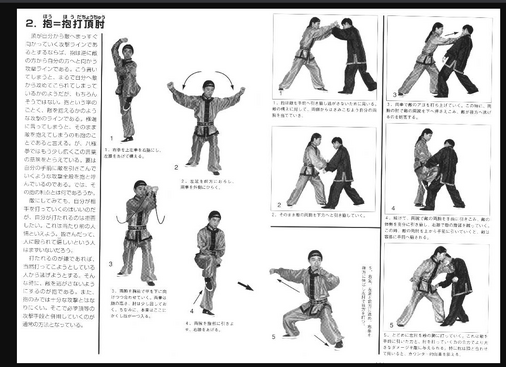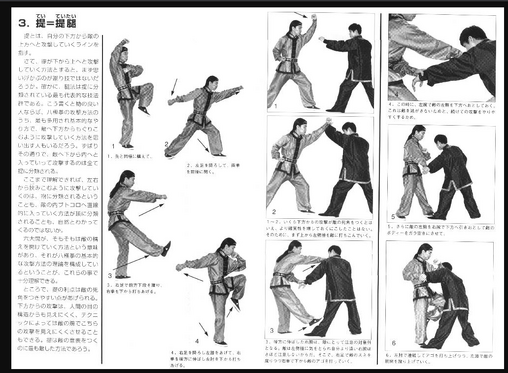Ryuchi Matsuda (松田 隆智, Matsuda Ryūchi) was the Japanese author of a manga called Kenji, which is supposedly based on his life story. He was also the author of A Historical Outline of Chinese Martial Arts.
Early life[]
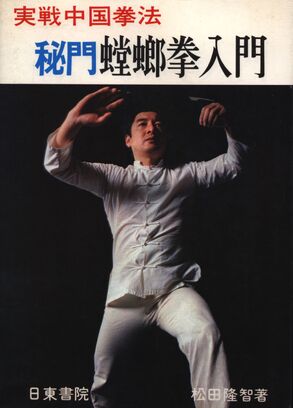
Ryuchi Matsuda was born June 6th of 1938 in Okazaki City, Aichi Prefecture[1]. When he was young, he learned multiple traditional Japanese martial arts, as well as karate. Matsuda first enrolled in Goju-ryu (Goju-ryu Kenbukan in Wakayama) and Oyama Dojo, the predecessor of Kyokushin Kaikan (awarded 3rd dan on April 15, 1967). After accumulating martial arts itineraries such as Jigen-ryū swordsmanship, Shinkage-ryu swordsmanship, Daito-ryu Aikijujutsu, Hakkō-ryū Jūjutsu (Minden master), Asayama Ichidenryu Sakai school, Kinbei Sato (ja), and possibly others.
Later in his life, He later went to train across Taiwan and mainland China, and learned multiple Chinese martial arts from Wutan, Northern Mantis Boxing, Chen-style taijiquan, Bagua Palm, Baji Boxing, and Yen Ching Boxing.
Bringing Bajiquan to Japan[]
He wrote his autobiography “Nazo no kenpō o motomete” (『謎の拳法を求めて』Eng. "In Search of Mysterious Kenpo") based on his own martial arts history, which later became a big hit and served basis for the martial arts manga Kenji in 1989.
However, in the eyes of many Chinese players, Li Shuwen's reputation is more than a little bit worse than that of Kong Mingfeng's ancestors who are also "heroes".
Although Li Shuwen was active in the Republic of China, his martial arts accomplishments did not lose to such household names as Huang Feihong and Ye Wen during the same period. However, as time goes by, Li Shuwen's name is rarely mentioned in various literary works and folklore about the time.
On the contrary, in Japan, the titles of "No Two Fighting" and "Sharp Gun Li", and the "Bajiquan" that coordinated with him to reach the top, are widely praised. In the current art forms such as games and animation, Li Shuwen's image is also Not uncommon.
So what kind of person is Li Shuwen, and why does this result of blooming inside the wall and outside the wall?
Gang Fist Fights No Two, Sharp Spear Li Shuwen
Li Shuwen was born in Cangzhou, Hebei during the Qing Dynasty. He learned Bajiquan and Big Spear from an early age. Both of these skills were brought to the extreme in Li Shuwen's hands.
When it comes to spear skills, Li Shuwen is also at the pinnacle. In addition to the title of "Sharp Spear", there are countless stories about his marksmanship state:
"Use a big gun to stab the flies on the wall, and the flies fall without a mark on the wall."
On the method of boxing, people give the nickname: Gang boxing is no two. The literal meaning is that there is no need to hit someone a second time, just like that person↓
Under the tutelage of Huang Sihai and Zhang Jingxing, Li Shuwen became famous after stabbing four Japanese instructors in Yuan Shikai's martial arts hall. After that, he became acquainted with various generals in the Beiyang New Army, and later served as a coach in Feng Guozhang's mansion.
And his disciples are even more impressive. The big disciple Huo Diange was a martial arts teacher and guard officer of Puyi . The last disciple, Liu Yunqiao, served in the Kuomintang's political uniforms and garrison. He was an instructor and guard of the Chiang Kai-shek guards and was also a famous assassin master in the Kuomintang. Li Jianwu, Liu Yunqiao's classmate, had been Mao's guard.
Portrait of Li Shuwen
Such a great master has traveled the world with his skills throughout his life. He hasn't met an opponent for nearly 40 years. The story about him should have been widely extolled, but now the Chinese people are quite unfamiliar with him.
This result seems unreasonable, but it can be said to be inevitable.
Li Shuwen was an example of being strict with himself and respecting the teacher when he studied art under Huang and Zhang. When I became a teacher later, I was very strict with respect to etiquette. But at this time, his students are no longer the poor disciples who are dedicated to learning arts, but are all warlords in high positions. To them, Li Shuwen also showed no mercy, which made many people lose face, and thus forged a lot of beams.
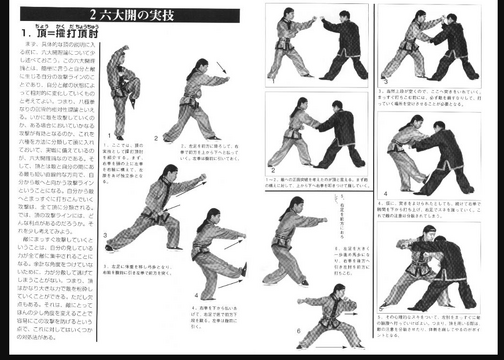
LDK1
Among his fellow martial artists, Li Shuwen likes to find someone to fight against him. Although he is invincible, he makes a tough shot. The martial arts world always pays attention to the point of study, but he shoots the gun quickly and hard, his subordinates are unrelenting, and he often suffers death and injury. Martial arts people can only be respectful and afraid of him, so it is not very good to get a reputation.
In comparison, Li Shuwen's reputation in the village may not be bad. According to his apprentice, he distributed the ocean to his neighbors during the drought in his hometown, and often brought some food back to help. From this point of view, Li Shuwen should be quite popular among the people.
However, in the rumors, there are more stories about Li Shuwen practicing martial arts, although many of them are used to set off his peerless martial arts, but...
In this way, everyone from Master Li's kung fu has been taught, and the cows must have left some bad memories, and the two going back and forth have actually caused a lot of trouble to the villagers around him.
In general, Li Shuwen's martial arts attainments are indeed beyond doubt. His uprightness, fear of power, and his innumerable research spirit should be praised. Even in that era of strong men, some of Li Shuwen's experiences and stories are not unbelievable.
But in the end, there is still a little bit of the "chivalrous" style that Chinese people have been most happiest with since ancient times, a little bit of the purpose of punishing evil and promoting good, and a little bit of the national plot to win glory for the country. After hundreds of years of washing by the torrent of history, the figure of the strong like this has gradually dimmed.
Bajiquan's second spring in Japan
Although in China, Li Shuwen and his extraordinary Baji boxing have faded out of people's sight, but one person brought this martial art to Taiwan and carried it forward.
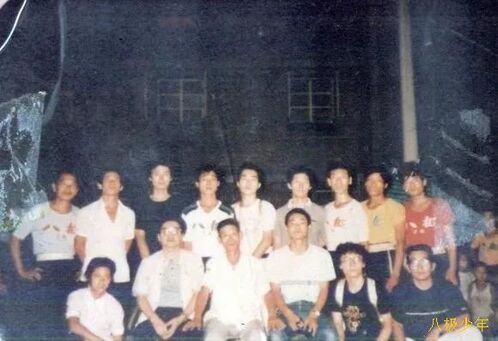
Matsuda Takashi (second from left in the front row) of the Japanese Karate Visiting Group received the Baji training by Mr. Li Fuchang and his son at the Shijiazhuang Baji Boxing Club
This person is Liu Yunqiao, the disciple of Li Shuwen's closed door mentioned above.
As the chief guard of Chiang Kai-shek, Liu Yunqiao moved to Taiwan during the Civil War of the Kuomintang and the Communist Party. He founded the martial arts magazine "Wu Tan" and opened a martial arts promotion center. Bajiquan took root in Taiwan, which is considered to have retained a strong and viable force for this boxing method.
Liu Yunqiao and Bajiquan
However, with the progress of the times, the military strategy demand for close combat technology has gradually weakened. As long as the age of peace is reached, this kind of deadly one-stroke will deviate more and more from the direction of society. So not long after, Bajiquan gradually faded out of ordinary people's vision in Taiwan.
But there are still many loyal enthusiasts of Bajiquan, who are persistently continuing the incense of this ancient boxing technique.
Among them is a martial idiot from Japan: Matsuda Takachi.
Matsuda has spent his entire life exploring various oriental martial arts secrets. After visiting various Japanese gymnasiums, he still couldn't be satisfied with his pursuit of the profound meaning of martial arts. In the end, he set his sights on China, the source of oriental martial arts.
Since the diplomatic relations between mainland China and Japan had not been normalized at that time, Matsuda Takachi went to Taiwan and worshipped Su Yuzhang (a disciple of Liu Yunqiao) from the Wutan Martial Arts Promotion Center as his teacher, opening up his incomprehensibility with Bajiquan. edge.
Later, when the mainland policy was relaxed, Matsuda began a trip to visit famous teachers in mainland China, and even created the famous martial art masterpiece "Chinese Martial Arts History", which is still used today as important materials for the study of ancient Chinese martial arts. Familiar. From this point of view alone, Matsuda’s contribution to the inheritance of traditional martial arts culture has been extraordinary.
Matsuda Takashi (second from left in the front row) of the Japanese Karate Visiting Group received the Baji training by Mr. Li Fuchang and his son at the Shijiazhuang Baji Boxing Club
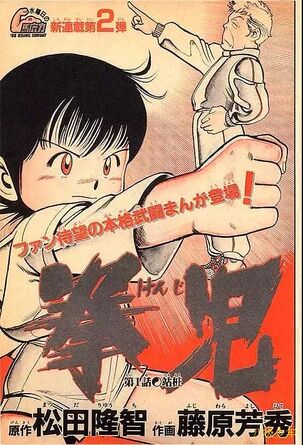
But this is far from his peak.
In the end, Matsuda and Bajiquan stepped out of the martial arts circle, and it was his later work: "Fighting Kenji".
"Fighting" is to some extent an autobiography of Matsuda. The protagonist in the story, Quaner, is a story about his grandfather's influence on Bajiquan, which eventually prompted him to visit Chinese and Japanese masters all the way to martial arts. .
Almost all the big figures in the story have prototypes in reality. Matsuda’s teacher Su Yuchang and Wutan founder Liu Yunqiao have all appeared under pseudonyms.
As the veteran of this faction, Li Shuwen in the comics has a fierce attack and will kill him with punches. Although his image is not much different from the real world, the comics are somewhat exaggerated, and the entire work is more or less exaggerated. With Bajiquan as the axis, in the end, Li Shuwen, who reached the top of the Bajiquan, was deified into the image of an invincible master.
Since the author Matsuda himself is a practicing Bajiquan master, and the story is based on his own legendary life experience, the storyline of Quan'er is very fascinating. Coupled with the solid graphic performance of the cartoonist Yoshihide Fujiwara, "Kenji" quickly emerged from the many juvenile hot-blooded comics in the same period and became an instant hit.
Someone has made a metaphor for the popularity of "Kenji" at that time, saying that the influence of "Kenji" in martial arts comics is equivalent to the "Slam Dunk" in sports comics, and even said that after the promotion of this comic, Li Shuwen's popularity in Japan is equivalent to Bruce Lee's in the United States.
Therefore, the powerful images of Bajiquan and Li Shuwen were deeply rooted in Japan through this "Fist", which had a wide impact on comic readers of that era.
One of the readers is Hiroshi Suzuki, the producer of Sega who is well-known for games such as Shenmue.
Suzuki Yu became obsessed with Bajiquan after watching "Kenji", and even went to Li Shuwen's hometown of Cangzhou, Hebei, where he visited Wu Lianzhi, the successor of Wu's Bajiquan to learn the art in person. Later, the well-known "VR Warrior" was born.
Looking back, Bajiquan has been gradually swallowed by the more exposed Tai Chi Wing Chun and other methods in the fiercely competitive Chinese martial arts. However, in Japan across the sea, Bajiquan is regarded as a representative form of Chinese martial arts and is well known. The representative of Bajiquan, Li Shuwen, has become a symbol of Chinese martial arts in the hearts of the Japanese.
What's interesting is that this kind of cognition is finally exported back to China through emerging art forms such as game animation.
This fate is really wonderful.
While Matsuda is strongly associated Chinese martial arts, he is also scholar in Japanese Kobudo.
Originally, judo, kendo, and karate were easily accessible at school clubs, local dojos, police stations, etc., but Kobudo was often neglected for not having any personal and regional ties. Matsuda actively sought out "obscure Japanese jujutsu" "mysterious kenpo", as evidenced by his background in Shinkage-ryu swordsmanship, Jigen-ryu swordsmanship, Daito-ryu Aikijujutsu, and visiting other old-fashioned dojos in various parts of Japan.
The achievement of making the existence of Japanese ancient martial arts more known is great, and he thought that "Japan has excellent martial arts that have achieved its own development." It can be said that it gave courage to those who had doubts about the martial arts that were becoming competitive and tried to "return the origin of Japanese martial arts".
In addition, he too part in undertakings to preserve the old schools by introducing Eiji Sakai of Asayama Ichiden-ryū.
Death[]
"Ryuchi" was his Dharma name when he was a Shingon priest of Toji Temple.
Ryuchi Matsuda died July 24, 2013 at 75 years old[1].
